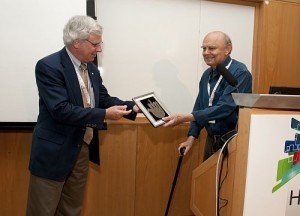
The conference, which was organized by Prof. Noemi Bitterman, Head of Industrial Design, together with the Faculty Dean, Prof. Yehuda Kalay, was attended by Prof. Eliezer Shalev, Dean of the Faculty of Medicine, the deans of the other faculties, Technion President Prof. Peretz Lavie, Haifa Mayor Yona Yahav, Director General of the Ministry of Health Prof. Roni Gamzu, and Prof. Shlomo Mor-Yosef, who served as the Director General of Hadassah Hospitals and currently serves as Director General of the National Insurance Institute.
Prof. Bitterman said that the conference was designed to break the barriers between academic researchers who tend to focus each on their own field, and to initiate a new, fruitful dialogue. “The reactions and the informal conversations during coffee breaks show that the goal was achieved. This is fascinating, since we have here a crossing of different fields, each with its own terminology, culture and way of thinking. Of course, it is important that the discussion focus on doctors and patients. When ‘talking architecture’, it is important to always remember that they are the ‘clients’ and it is them that we need to serve. Just as the study programs we developed here in the Technion do, such conferences advance this thinking and this essential dialogue”, said Prof. Bitterman.
Prof. Yehuda Kalay said that “it takes years to build a hospital, and during its construction medical technologies change. As architects we must always remember that our design has significant implications on medical practice, and we must always think ahead.”
Prof. Shlomo Mor-Yosef presented major trends in contemporary medicine, including molecular imaging, robotic surgery and personalized medicine. He noted that the trouble the Israeli healthcare system is in requires broad, creative thinking. “In our hospitals we deal with a very high occupancy rate, above 97%, and this makes it very difficult for these systems to function”, said Prof. Mor-Yossef.
Dr. Kobi Vortman, Technion alumnus and President of InSightec, presented the technology developed by his company – a method for non-invasive ‘surgery’ using sound waves. It is a “virtual, non-invasive scalpel of sorts, with which medical procedures can be performed on the brain and other organs without invading the body and without the need for hospitalization. It is an example of the successful implementation of patient-personalized medicine.”
Prof. Rafael Beyar, Director General of Rambam Medical Center, presented the new projects at Rambam, among them a secure underground hospital, fortified against conventional warfare as well as against biological and chemical warfare. It is an underground parking garage that can be converted within 72 hours into a 2,000-bed hospital which includes all the necessary equipment.
Technion President Prof. Peretz Lavie said that in 1969 the Technion Senate made an historical decision: to establish in the Technion a faculty of medicine. “The rational, as phrased at the time, was that technology and medicine will walk in the future hand in hand, and that a faculty of medicine in a technological institute is therefore the right step. Today’s conference continues that vision.”
Prof. Jos Stuyfzand, Creative Director at Philips Netherlands, described the innovations in designing the user experience in hospitals, with the patient at the focus. “The healthcare system needs to perceive itself as a service provider. When we are sick we go to the hospital not for its buildings but to be provided with a service. You, the architects, need to think about the hospital with the same view, and not with a ‘purely’ architectural view. The architects must have a broader view of their work and work as part of a multi-profession team. It is very important to ask the patients what they want, rather than just the medical staff”.
Prof. Paul Barach, doctor and researcher of hospital safety and quality, told the conference participants that “medical technology is a wonderful thing. The tragic irony is that in many cases, it could in itself cause severe injury to patients. We must cease to sanctify the technology and focus on the health of the patient. Technology is not a magic solution to all problems, and it must serve the patient rather than be an end in itself.”
Prof. Barach, who resided in the past in Israel and was an undergraduate student at the Technion, currently works at the Utrecht Medical Centre in the Netherlands: “around 5 percent of all hospitalized patients are injured while receiving medical treatment, and 50 thousand patients die in the USA every year as a result of the medical procedure itself”.
Prof. Barach says that minor improvements, such as increasing the light in the room or supervising hand washing by medical staff, could significantly reduce harm to patients, but this requires awareness and research, which in turn mandates public funding. Israel is lacking in serious discussion on this matter, and it is time for such a discussion that will go beyond the standard petty complaints. Prof. Danny Gopher of the Technion and Prof. Yoel Dunchin of Hadassah are doing a great job in this sense, but unfortunately they are the exception to the rule. It is very important to bring the architects to the hospitals and to allow them to experience hospital simulations. For example, when an architect designs a hospital he does not think about hospitals’ activity on weekends, when most of their supporting staff is absent and the mortality rates in them increase by 20%. Proper planning which is aware of this could reduce mortality rates. We must perceive the structure as medication, and consider how its design can contribute as much as possible to patients’ health. “If we could achieve a 99.9% success rate in medical treatments, and only 0.1% of the patients would die as a result of such treatments, would that satisfy us? In a statistical analogy to aviation, based on the present frequency of flights worldwide, this would be one airplane crashing every three days. So this option, which would be inconceivable in aviation, is in fact accepted uncontested in healthcare.”
Prof. Gianfranco Carrara, a hospital architect from Italy, presented hospital design trends in Europe, and the architect Roger Hay of California, USA presented lean technologies. The Israeli experience in this field was presented by 6 leading architects: Prof. Yeuda kalay, Ralli Gavrieli, Ehud Gefen, Arthur Spector, Arad Sharon, and Avi Torjman.
A ceremony was held in honor of the architect Moshe Zarhy, whose healthcare buildings were a milestone in the history of hospitals in Israel.
Above: Moshe Zarhy (on the right) receives a “Hamsa” from Prof. Kalay. Photo: Technion Spokesman

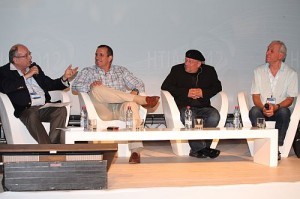 Zohar Zisapel : “The Israeli Engineers are the Best in the World”
Zohar Zisapel : “The Israeli Engineers are the Best in the World” The conference was formally opened with a salute to the Technion in celebration of 100 years to the laying of the cornerstone for our historic building in Hadar Hacarmel
The conference was formally opened with a salute to the Technion in celebration of 100 years to the laying of the cornerstone for our historic building in Hadar Hacarmel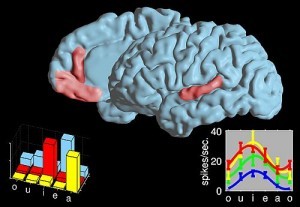 The researchers were able to directly decode vowels from the neural activity which leads to their articulation – a finding which could allow individuals who are completely paralyzed to “speak” to the people around them through a direct brain-computer interface
The researchers were able to directly decode vowels from the neural activity which leads to their articulation – a finding which could allow individuals who are completely paralyzed to “speak” to the people around them through a direct brain-computer interface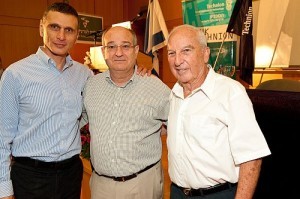 Danny Yamin, CEO of Microsoft Israel, was appointed Chairman of the Technion Council, replacing Yoram Alster after nine years.
Danny Yamin, CEO of Microsoft Israel, was appointed Chairman of the Technion Council, replacing Yoram Alster after nine years.
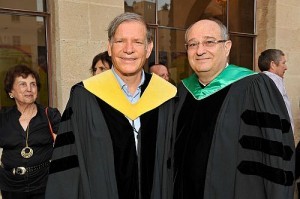 The Technion awarded yesterday eight honorary doctorates and has launched today Profs. Shlomo Maital and Amnon Frenkel’s book on the Institute’s contribution to the State of Israel. Their research shows that the investment in the creation of human capital in the Technion produces an annual return of at least 76-197 percent, or, in absolute terms, a return of 35-60 billion dollars over the 50 years of a graduate class.
The Technion awarded yesterday eight honorary doctorates and has launched today Profs. Shlomo Maital and Amnon Frenkel’s book on the Institute’s contribution to the State of Israel. Their research shows that the investment in the creation of human capital in the Technion produces an annual return of at least 76-197 percent, or, in absolute terms, a return of 35-60 billion dollars over the 50 years of a graduate class.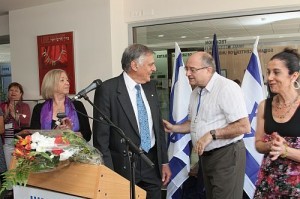 The exhibition is part of the events of the annual meeting of the Board of Governors
The exhibition is part of the events of the annual meeting of the Board of Governors